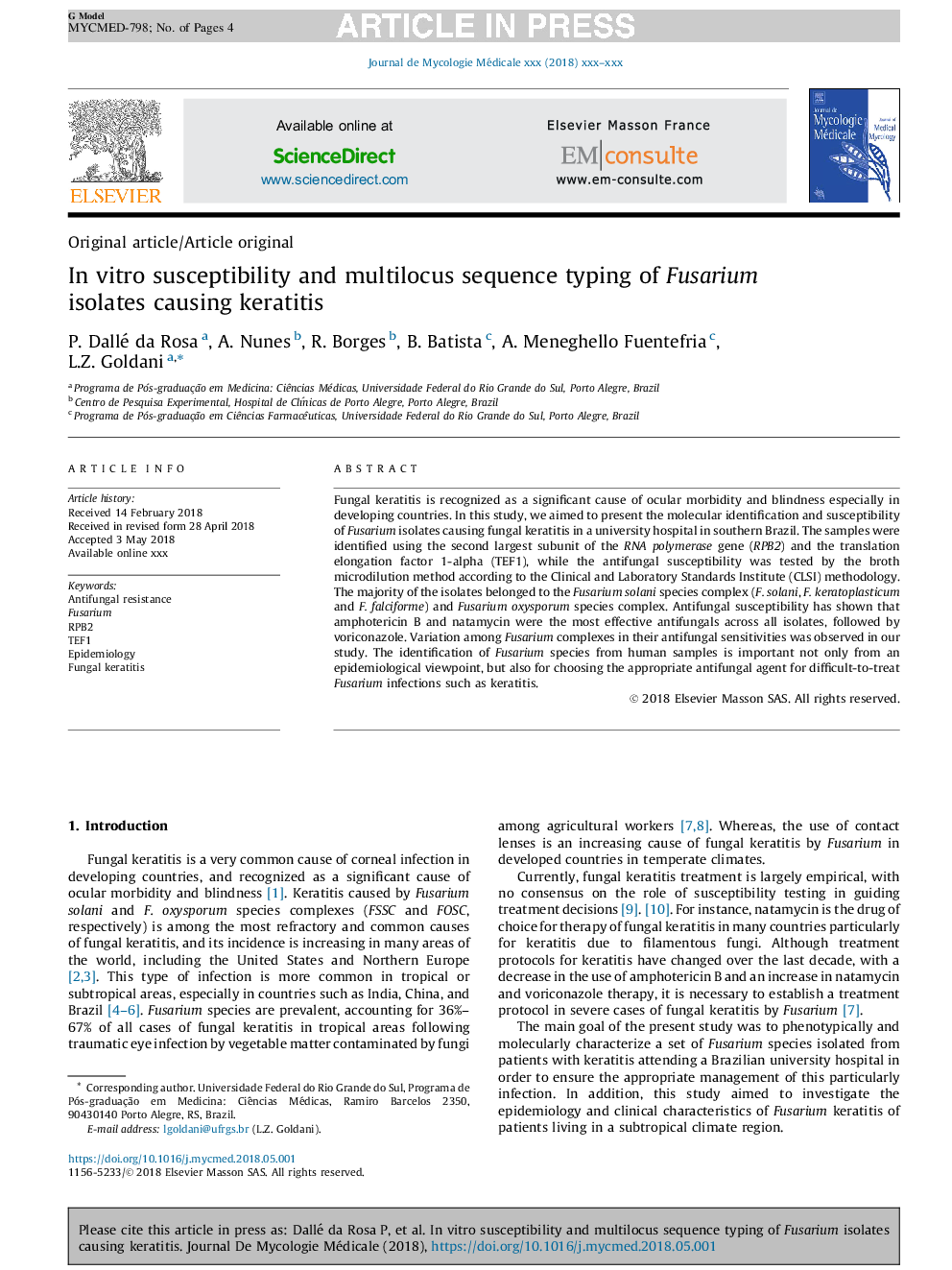| Article ID | Journal | Published Year | Pages | File Type |
|---|---|---|---|---|
| 8963818 | Journal de Mycologie Médicale / Journal of Medical Mycology | 2018 | 4 Pages |
Abstract
Fungal keratitis is recognized as a significant cause of ocular morbidity and blindness especially in developing countries. In this study, we aimed to present the molecular identification and susceptibility of Fusarium isolates causing fungal keratitis in a university hospital in southern Brazil. The samples were identified using the second largest subunit of the RNA polymerase gene (RPB2) and the translation elongation factor 1-alpha (TEF1), while the antifungal susceptibility was tested by the broth microdilution method according to the Clinical and Laboratory Standards Institute (CLSI) methodology. The majority of the isolates belonged to the Fusarium solani species complex (F. solani, F. keratoplasticum and F. falciforme) and Fusarium oxysporum species complex. Antifungal susceptibility has shown that amphotericin B and natamycin were the most effective antifungals across all isolates, followed by voriconazole. Variation among Fusarium complexes in their antifungal sensitivities was observed in our study. The identification of Fusarium species from human samples is important not only from an epidemiological viewpoint, but also for choosing the appropriate antifungal agent for difficult-to-treat Fusarium infections such as keratitis.
Related Topics
Life Sciences
Immunology and Microbiology
Parasitology
Authors
P. Dallé da Rosa, A. Nunes, R. Borges, B. Batista, A. Meneghello Fuentefria, L.Z. Goldani,
